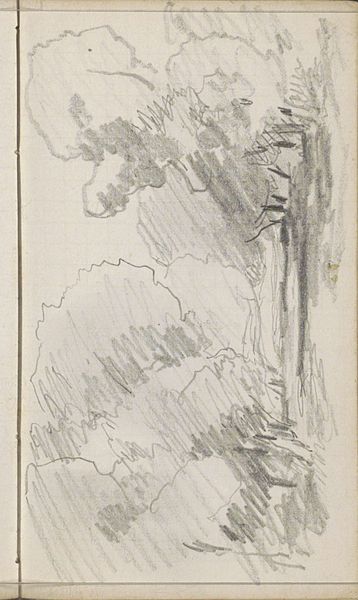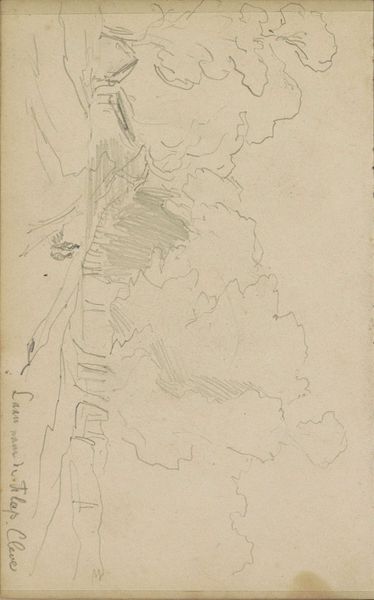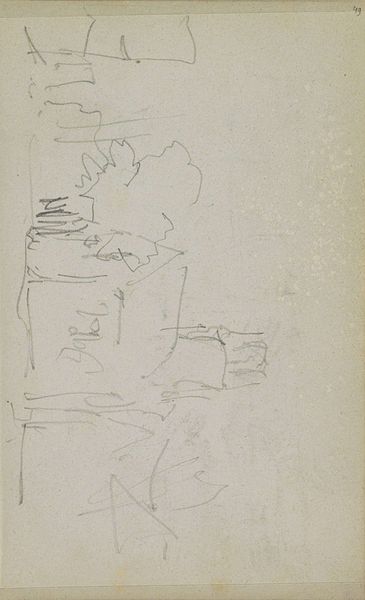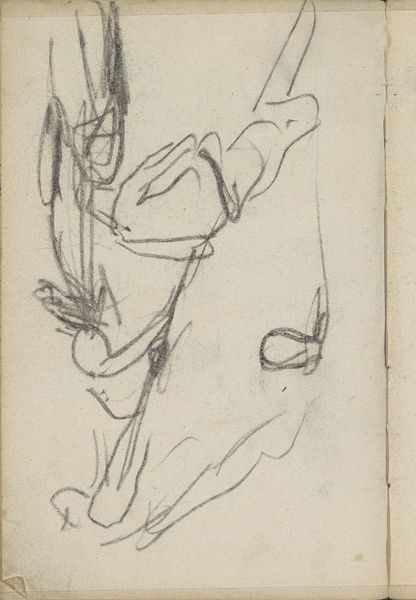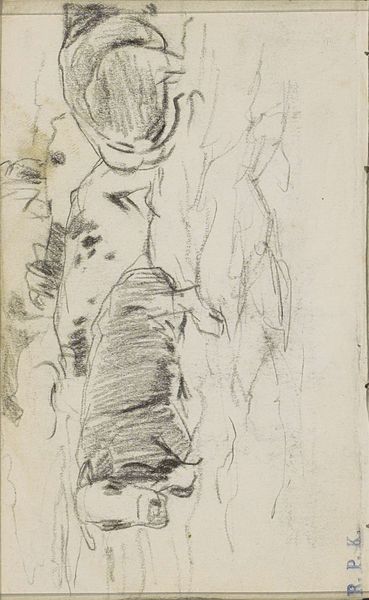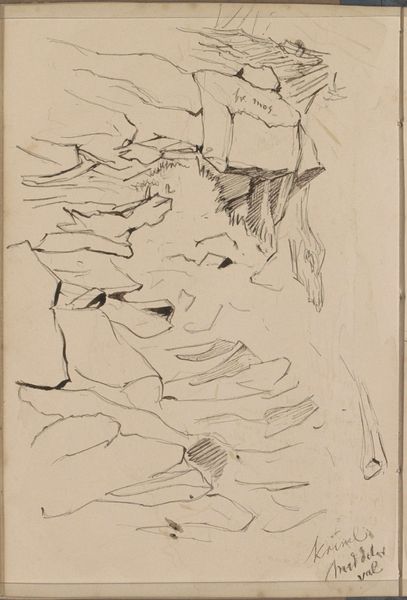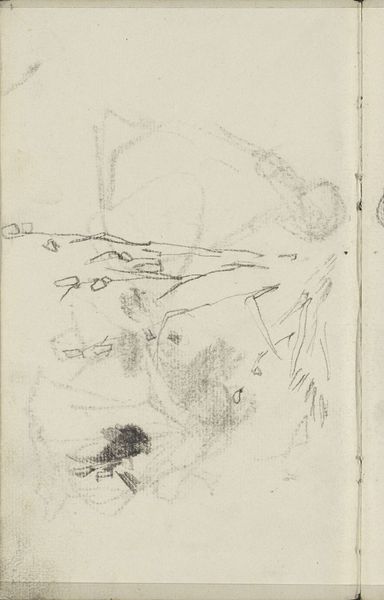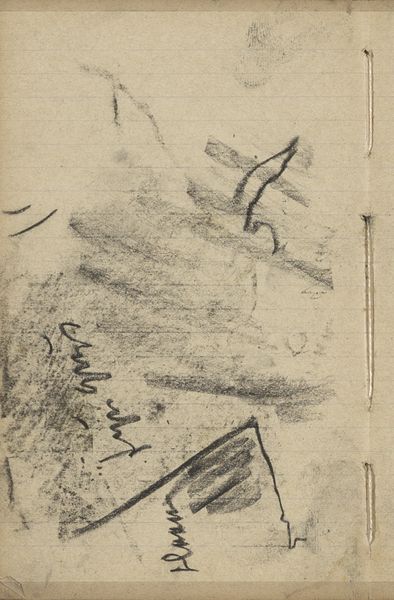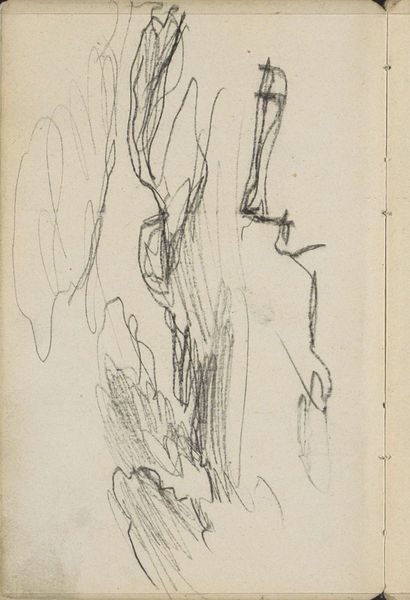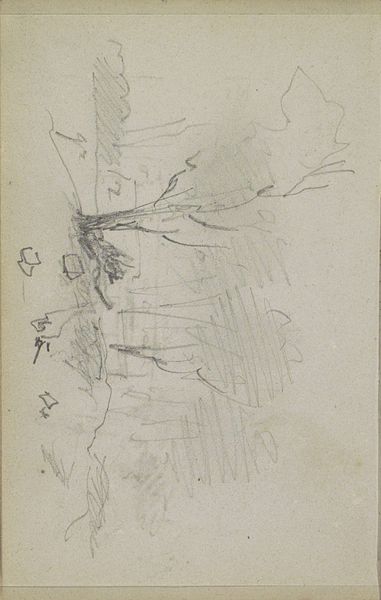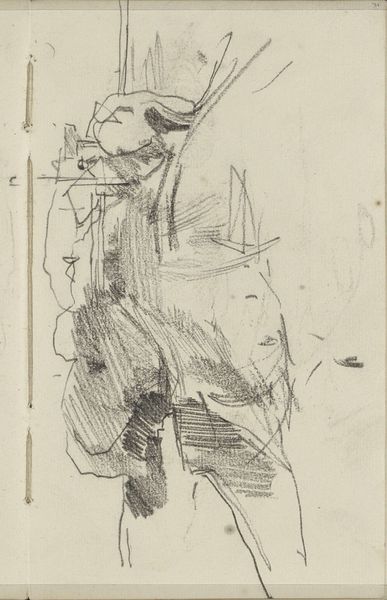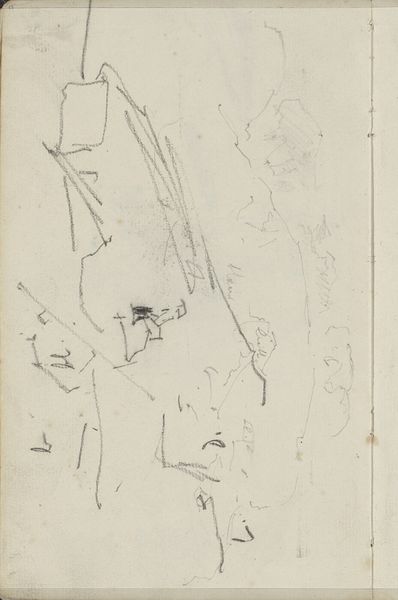
drawing, pencil
#
drawing
#
amateur sketch
#
light pencil work
#
pen sketch
#
incomplete sketchy
#
landscape
#
personal sketchbook
#
ink drawing experimentation
#
pen-ink sketch
#
pencil
#
sketchbook drawing
#
sketchbook art
#
realism
#
initial sketch
Copyright: Rijks Museum: Open Domain
Curator: Anton Mauve’s “Landschap,” created between 1848 and 1888, offers us a glimpse into the artist’s process. It’s a drawing, employing both pencil and pen, currently held in the collection of the Rijksmuseum. Editor: It feels very… tentative. The marks are fleeting, almost ephemeral. I see a central vertical structure, perhaps a tree trunk, but everything around it is suggested rather than defined. It gives the whole image a sense of quiet searching. Curator: Indeed. Observe how the vertical lines create a sense of upward movement, counterbalanced by the chaotic scribbles suggesting foliage or perhaps clouds. It's all about the tension between line and mass, positive and negative space. The materiality of the pencil strokes on the paper becomes the focal point. Editor: I’m struck by the possible symbolism of a lone tree. Trees often represent strength, growth, and connection to the earth. Given the sketch-like nature of the piece, perhaps this embodies Mauve's fleeting impression of these attributes. Perhaps he saw in the tree, some sense of his internal process in capturing a scene. Curator: That's an interesting interpretation. The application of structuralism sees beyond obvious symbols; it highlights relationships. The tree-like structure, through vertical repetition, dominates the image’s spatial logic. One cannot disregard how its positioning draws the viewer's eye toward it. Editor: Yet that dominance isn't forceful. The loose linework subverts any definitive statement, softening its assertiveness, perhaps indicating vulnerability and incompleteness. An echo of human feelings embodied in the natural landscape. Curator: Precisely, and that incompleteness allows us to consider the artist’s intention. Was this meant as a finished work, or a preparatory sketch for a larger painting? The open-endedness invites our active participation in the construction of meaning. Editor: So, the "Landschap", while seemingly simple, is rich with implications. A visual fragment resonates because it represents much more. Curator: Precisely! By looking closely at this piece, it’s evident that something initially understated turns into profound material and structural components.
Comments
No comments
Be the first to comment and join the conversation on the ultimate creative platform.
